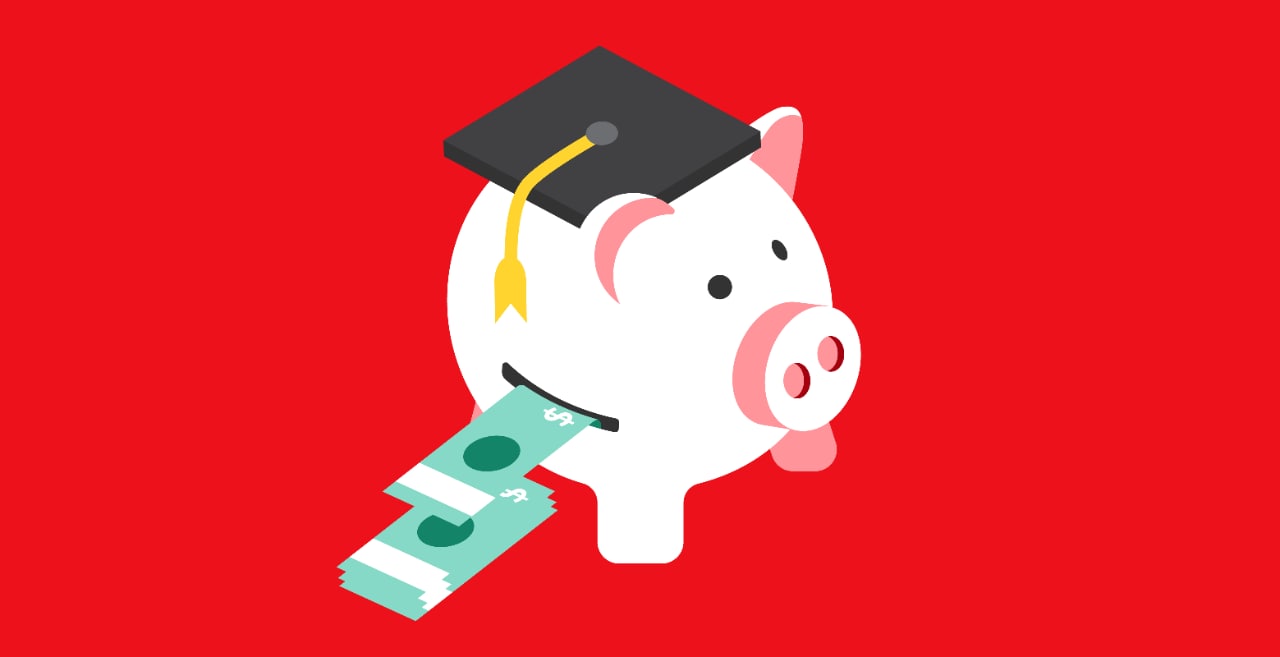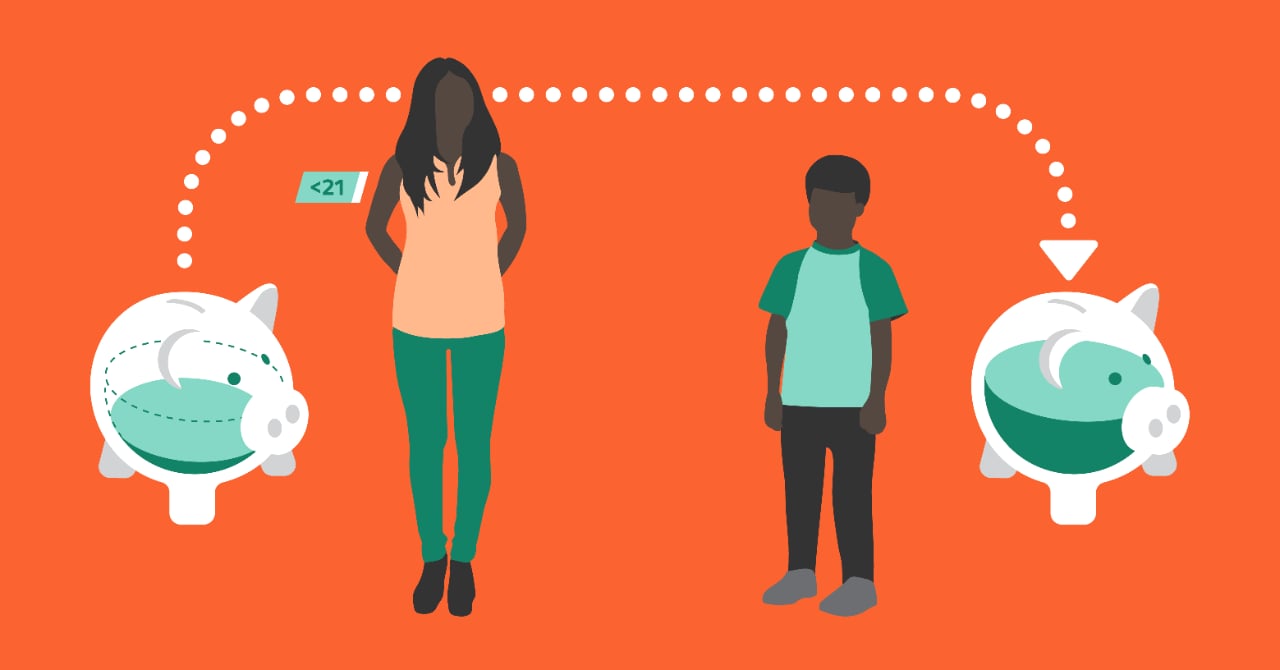The day has finally come. Your child has finished high school and enrolled into a post-secondary educational program, and you can now request, on their behalf, to withdraw money from their Registered Education Savings Plan (RESP).
Before you start taking money out, it’s important to know how to withdraw from an RESP as the rules can be as complicated as the courses your child is about to start taking.
That’s why we’ve put together a guide on everything you need to know about RESP withdrawals, including how to withdraw money, how RESP withdrawals are taxed and what happens to an RESP if it is not used.

An RESP stands for an Registered Education Savings Plan. It’s a government-supported savings account designed to help save for children’s’ education after high school.
Typically, an RESP account is opened by parents. But it can be opened by other people as well, like a grandparent.
When you deposit money into an RESP, the government may also contribute to it, with a Canada Education Savings Grant to a maximum of $7,200 per beneficiary.1
Knowing how to withdraw from your RESP properly can help you get the most out of your RESP.
To start, you’ll need to contact your RESP provider. They’ll ask to see proof that the beneficiary (the child) is enrolled in a qualifying part-time or full-time education program.
Typically, proof can mean either proof of enrolment, online confirmation of enrolment or an invoice and online timetable that display the beneficiary’s2:
- Full name of the student
- Educational institution’s name (by logo, letterhead or website address)
- Educational program name (program of study)
- Start date – must be for the current academic session
- Indicates if they are full time or part time
When can I withdraw funds from an RESP?
Once your provider is satisfied with the information that you provided, you can move onto the next steps of your withdrawal.
You can take funds from an RESP once your child has finished high school and has enrolled as a full or part-time student in a qualifying program at a post-secondary educational institution, like college, university or a trade school.
Who is eligible to withdraw from an RESP?
The money in an RESP is controlled by the subscriber – that’s the person who set up the plan, usually a parent. This means that only the subscriber can request withdrawals from the account.
There are two types of educational withdrawals:
- Post-Secondary Education (PSE) – is a withdrawal of the contributions made by the subscriber. These withdrawals can be made at any time, for whatever reason and can be paid to the subscriber, the beneficiary or sent to an educational institution.
- Education Assistance Payment (EAP) – is a withdrawal of the earnings and government grant segments of the RESP, which can only be paid to the beneficiary to a maximum of $7,200 among all plans. Any CESG paid over the amount $7,200 needs to be repaid to the government directly.
The funds inside an RESP as they grow are not treated the same as when they are withdrawn when it comes to taxation. That means it’s super important to understand the taxation laws when you withdraw from an RESP.
Here’s a breakdown of how they’re affected, according to the different types of withdrawals you make.
Post-Secondary Education (PSE)
Withdrawals made when the beneficiary has reached post-secondary education are non-taxable. That’s because they are taken from the contribution amount portion of the RESP and taxes have already been paid on the funds the subscriber contributes directly.
That means the money can be withdrawn tax free and may be a more efficient way to take money out of an RESP, should the beneficiary need it.
Education Assistance Payment (EAP)
Education Assistance Payment withdrawals are paid directly to the student. Due to the nature of RESPs, as they are made up of the non-contribution amount portion of the RESP, these withdrawals are treated as taxable income to the beneficiary.
But because most students have relatively low income, they may pay very little income tax on RESP withdrawals. This means that money taken out may not be penalized too heavily by tax. However, if the CESG is not used when enrolled in schooling or within six months of ceasing to enrol, then they would need to repay the CESG back to the government.
RESPs are a great way to save for education. But, if the child decides not to pursue higher education, what happens to the money inside their RESP?
Keep the account open
Just because your child doesn’t enrol into post-secondary education immediately after high school, that doesn’t necessarily mean they don’t want to go altogether. An RESP will remain open for 35 years, giving them flexibility to go to college, university or a trade school at a time that works for them.
An RESP can also be used towards a range of different apprenticeships and other educational programmes offered by government-designated groups.
Transfer the RESP to another child
If you have multiple children, you have the option of transferring the funds to your other child’s RESP. If they’re under the age of 21, you’ll be able to complete the transfer, including government grants, without any tax consequences.
However, if the child is over the age of 21, you may have to pay taxes and return any Canada Educational Saving Grants (CESGs). If you’re unsure about how this works, it’s worth speaking to a financial advisor to discuss further.

Transfer the RESP to an RRSP
You can transfer the earnings in the RESP to a registered retirement savings plan (RRSP). To do so, the RESP need to have been open for at least 10 years and all beneficiaries must be over the age of 21, and not pursuing higher education and be a Canadian resident. You also need to have the available contribution room in your RRSP.
Not sure what an RRSP is? We’ve broken it down to explain how it can help people save for their retirement years and how an RRSP works.
Withdraw the money
If you are taking out the money you contributed to the account (a.k.a. the contribution funds) for non-schooling purposes, any government grants will be returned to the government.
If you want to take out the money from the RESP that was grown in the account over the years (a.k.a. the earnings), the RESP need to have been open for at least 10 years and all beneficiaries need to be over the age of 21, not pursuing higher education and be a Canadian resident.
It’s important to know that any earnings remaining in the RESP after the account has been closed will be taxed at a marginal tax rate – plus an extra penalty of 20%.
There isn’t an official list of eligible expenses and students aren’t required to keep receipts. That means RESP funds can be spent on any expense relating to your child’s post-secondary education.
This can include:3
- University, college, and apprenticeships programmes
- Living expenses such as resident fees, bills, and food
- Equipment costs such as laptops and desks
- Transportation, handy if your child is living off campus
- Auto insurance, gas, parking, and maintenance costs
- Textbooks and stationery
- Studying abroad
There are no limits on the amount of Post-Secondary Education (PSE) that can be withdrawn.
However, Education Assistance Payment (EAP) withdrawals are currently capped at a $8,000 limit for a student in full-time studies or a $4,000 limit if the student is in part-time studies, during the first 13 weeks of schooling.
After 13 weeks, any amount of EAP can be withdrawn for full time only. Part time currently continues to be $4,000 for each 13 weeks.
Beneficiaries who receive money from an RESP need to declare their Educational Assistance Payment as income. Your RESP provider should send you a T4A slip for the year that any EAPs were received.
It’s important to note that the amount of tax you will have to pay will depend on your individual circumstances.
Under the Canada Education Savings Grant, the government matches 20 percent of the first $2,500 contributed each year to an RESP. This means that a maximum of $500 can be added to an RESP annually.
You may also have carry forward room from a previous year, that can be used up to a maximum of another $2,500 in contributions for another $500 in grant.
Children from low-income families may also be entitled to Additional amounts of Canada Education Savings Grant (ACESG). Contact a financial advisor or your local government authority to find out whether you are eligible.
To be eligible for an RESP, the beneficiary must be enrolled in a qualifying educational programme. This should be at post-secondary school level, last at least three consecutive weeks, and require at least 10 hours of instruction or work in the programme per week.
Saving money for a child's post-secondary education is one great way to prepare for their future. It allows you to build savings over time, tax-free, and to potentially take advantage of government grants to help you along the way. Best yet, RESPs can be used for a variety of training and educational paths, so young students can follow their dreams.
https://www.canada.ca/en/services/benefits/education/education-savings/paying-education.html;
Designated Educational Institutions:
https://www.canada.ca/en/employment-social-development/programs/designated-schools.html
List of Certified Institutions (trade school/vocational institutions):


